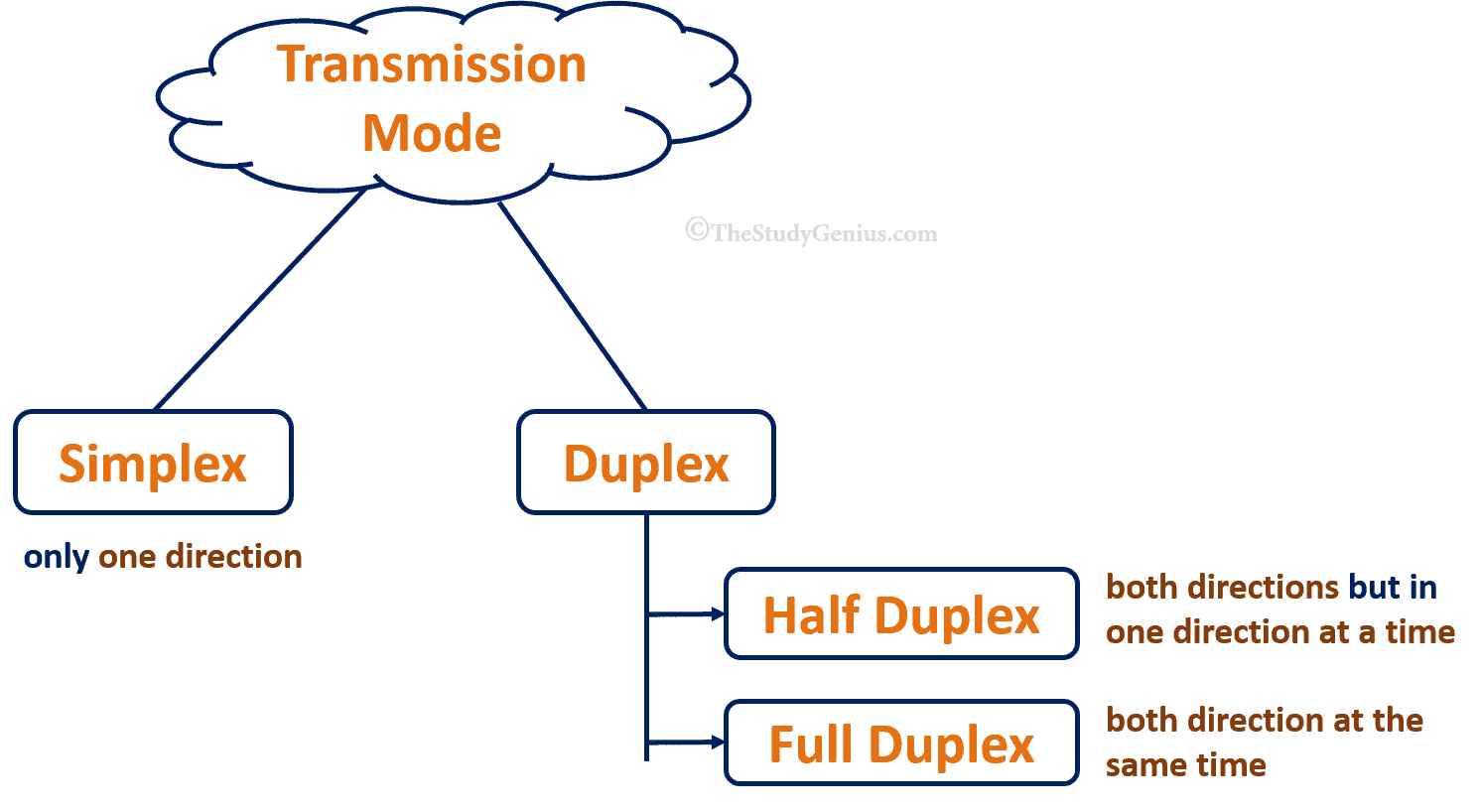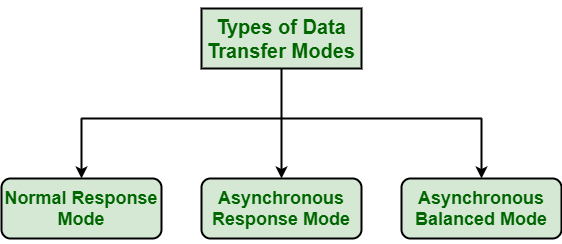Explain Different Types of Data Transfer Modes
Other instructions are used to transfer data transfer data between CPU and memory. Data transfer utilizes various communication medium formats to move data between one or more nodes.

What Are The Data Transmission Modes In A Network
A simplex connection is a connection in which the data flows in only one direction from the transmitter to the receiver.

. In this article we are going to learn about the introduction of input output data transfer mode and the types of data transfer mode in computer science and organization. The transmission mode is also known as the communication mode. - It is also possible between a memory location and a register.
Data travels in one direction from A to B and then the other direction from B to A but not at the same time. Input output transfer mode. Normal Response Mode NRM.
Let us go through the different types of parallel data transfer schemes. In this mode a sender can only send data but cant receive it similarly a receiver can only receive data but cant send it. Thus for the Intel 8085 8 bits of data are sent all together using eight parallel lines.
Once a data transfer is initiated the CPU is required to monitor the interface. Data transfer is initiated by an instruction in the program. PROGRAMMED IO These operations are a result of IO instructions written in the computer program.
In 8085 microprocessor mainly three types of parallel data transfer scheme we observed. These are as follows. 3 Transparent or hidden DMA.
In this mode Burst of data entire data or burst of block containing data is transferred before CPU takes control of the buses back from DMAC. The asynchronous data transfer between two independent units requires that control signals be transmitted between the communicating units to indicate when they send the data. The RS-485 is half-duplex.
1 Programmed IO 2 Interrupt driven IO 3 Direct memory access Direct memory access DMA is a form of IO in which a special module called a DMA module controls the exchange of data between main memory and an IO module. Normal Response Mode NRM Here two types of stations are there a primary station that send commands and secondary station that can respond to received commands. Parallel Data Transfer Techniques.
Data transfer to and from peripherals may be handled in one of three possible modes. Parallel transmission is commonly used to transfer data from computer to printer. Analog data transfer typically sends data in the form of analog signals while digital data transfer converts data into digital bit streams.
Parallel data transfer scheme Parallel data transfer scheme is faster than serial IO transfer. There are two types of data transmission. - Data transfer is possible between two registers.
This type of. The Strobe Control method of asynchronous data transfer employs a single control line to time. The way in which data is transmitted from one device to another device is known as transmission mode.
Cycle Stealing-DMA controller steals memory cycles from the processor though processor originates most memory access. There are three different modes of DMA data transfer which are as follows Burst Mode In burst mode a whole block of data is shared in one contiguous sequence. In parallel data transfer mode 8-bit data send all together with 8 parallel wire.
Mode-1 Burst Mode. Transfer Modes HDLC supports two types of transfer modes normal response mode and asynchronous balanced mode. Usually the data transfer data between CPU register and peripheral device.
It represents the organization of a single computer containing a. It is usually unidirectional. The RS-485 is half-duplex.
The data transfer between io device and CPU that has various modes. There are three kinds of transfer mode present to transfer the data from input out devices to other components of the. Thus the two methods can achieve the asynchronous way of data transfer.
Each bit is transmitted over a separate line. In serial data transmission a group of bits of data flow in sequential Order through single communication line. Interrupt - initiated IO.
This is the quickest mode of DMA Transfer since at once a huge amount of data is being transferred. Serial Transmission Parallel Transmission A method of transmission in which groups of bits are sent at the same time over multiple wires is called parallel transmission. Data Transfer Modes of a Computer System SISD Single Instruction Stream Single Data Stream.
Submitted by Prerana Jain on July 08 2018. Therefore the transmission mode is also known as a directional mode. In this two or more data bytes are transferred continuously.
- In reality data is never transferred it can only be copied from one location to another. Each communication channel has a direction associated with it and transmission media provide the direction. There are 3 different transmission modes that are characterized according to the direction of the exchanges.
A simplex connection a half-duplex connection and a full-duplex connection. -Types of DMA Transfer-Cycle stealing. The flow of traffic on one-lane residential street is an example of serial data transmission mode.
NRM is generally is type of unbalanced configuration in which only primary terminal or station may initiate or starts data transfer to secondary station. Those are Programmed IO Data Transfer Interrupt Driven IO Data Transfer. 1 Burst or block transfer DMA It is the fastest DMA mode.
We know that under the parallel data transfer scheme multiple data bits can be transmitted at the same time. The various types of data transfer operations possible are. Transferred data may be of any type size and nature.
Different Modes of Data Transfer Programmed IO. Each data item transfer is initiated by an instruction in the program. SIMD Single Instruction Stream Multiple Data Stream.
It represents an organization that includes multiple processing. There are three types of transmission mode Simplex Mode Half-Duplex Mode Full-Duplex Mode Simplex Mode In simplex mode Data can flow in only one direction means data communication is unidirectional. Data can travel in both directions at the same time.
Processor is disconnected from system bus during DMA transfer. 1whatever instruction you have provided for the IO operations the result of these instructions are written here. There are three modes of transfer for data commands and status as follows.
1Programmed io 2Interrupt intiated io 3DMA Direct Memory access. Secondary terminal or station transfers data only in response when it is commanded to do so by primary station. It is used for both point - to - point and multipoint communications.
Direct memory access DMA Programmed IO operations are the result of IO instructions written in the computer program. Brust mode- The DMA controller may be given exclusive access to the main memory to trnasfer a block of data without interruption. The peripheral has to be constantly monitored.
Data transfer is initiated by an instruction in the program. - Also it can occur between an inputoutput device and an accumulator. The different DMA transfer modes are as follows- 1 Burst or block transfer DMA 2 Cycle steal or single byte transfer DMA.
Since the DMA controller is allowed access to the system buses by the CPU it sends all bytes of data in the data block earlier yield control of the system buses back to the CPU.

Transmission Modes In Computer Networks Simplex Half Duplex And Full Duplex Geeksforgeeks

Comments
Post a Comment